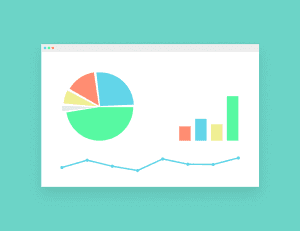How do you even measure the cost-benefit ratio for a SEO strategy? It is tough to look at a piece of content or a blog post and analyze its value. There are some aspects of Search Engine Optimization that are hard to quantify.
Having said that, there are way you can compare the costs and benefits. It all comes down to your goals.
Set some goals
 The first and most important step to measure the worth of your SEO strategy is to set solid goals. When we say solid, we mean reasonable. “I want one million followers within next 6 months” is not a reasonable goal.
The first and most important step to measure the worth of your SEO strategy is to set solid goals. When we say solid, we mean reasonable. “I want one million followers within next 6 months” is not a reasonable goal.
Set reasonable goals and set a reasonable time limit, and reasonable amount of expenses to achieve them. If you don’t meet that goal, evaluate carefully what went wrong.
Also, instead of setting one goal, set different kinds of goals – short-term, and long-term. Put down a concrete number against each goal. What number do you expect to see next month? Next year? Five years from now?
Don’t be abstract. As we said earlier, setting yourself a goal of getting one million followers within next 6 months, when you are just starting out, – that’s not reasonable. Think reasonable time frame and concrete numbers.
Consider the Costs
 You will have to bear a lot of costs associated with your SEO plan. All these costs can be broadly classified into 3 categories: upfront costs, ongoing costs, one-time costs.
You will have to bear a lot of costs associated with your SEO plan. All these costs can be broadly classified into 3 categories: upfront costs, ongoing costs, one-time costs.
Upfront: Generally, the upfront expenditure is the heaviest on your pocket, but it’s also the most essential. For example, when you hire a SEO company to do a complete SEO audit, that’s an upfront cost. Or when you need to redesign your website completely. Or when your URL structure, backend, site code, and mobile compatibility are not up-to-date.
Good news is these costs are only one-time thing. Bad news is there are still more expenses you need to consider.
Ongoing: As the name suggests, you have to spend money on these costs on a consistent basis. For example, the monthly fee you pay to your Phoenix SEO agency. Also, the cost of running pay-per-click ads is an ongoing cost. Thankfully, it’s much easier to measure and compare the metrics here.
One-time: We like to call these ‘unfortunate choices’. Seriously. No matter how hard you try to be careful, you will have to bear these expenses because of the inevitability. For example, a new Google update that declares a part of your website is not acceptable any longer and you need to pay a penalty fee. You will howl, you will pull out your hair, you might even cry; but you WILL have to pay it.
How much Organic Traffic are you getting?
 This is the reason we have all gathered here. The whole point of breaking your backs and mulling over every piece of SEO strategy is to generate organic traffic. The traffic that comes your way via Google search, for example.
This is the reason we have all gathered here. The whole point of breaking your backs and mulling over every piece of SEO strategy is to generate organic traffic. The traffic that comes your way via Google search, for example.
But (there’s always a But). But even a million of organic hits a day do not exactly guarantee that your product is selling. In fact if people are only visiting your page, and not buying anything, they are actually harming you by consuming your hosting budget!
That’s why it’s essential to use Google Analytics to keep track of your visitors’ metrics. If you haven’t already, go and install this marvelous tool right now.
What your Conversion Rate?
You also need to keep a track of your total number of conversions, and the profit from those conversions. SEO can help you optimize your conversion rates big time. Don’t forget to compare the Before and After results to gauge how much your SEO campaign is worth.

